The OBi 110 provides an FXO port to connect to an analogue telephone line (PSTN). Once it is connected, you can use the OBi110 as a SIP gateway to that telephone line. It provides inbound and outbound calling functionality.
After changing each page, you should click the Submit button at the bottom of the page.
First, configure the OBi110 with a static IP address in System Management -> Network Settings:
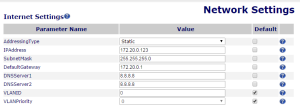
Now configure the ITSP profile. Give the profile a name in Service Providers -> ITSP Profile A -> General:
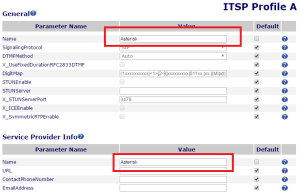
Configure the SIP settings for the profile in Service Providers -> ITSP Profile A -> SIP. There’s a lot here but you should only need to configure the IP/hostname of your SIP provider and enable caller ID spoofing (this sends the caller ID received from the PSTN to the SIP endpoint):
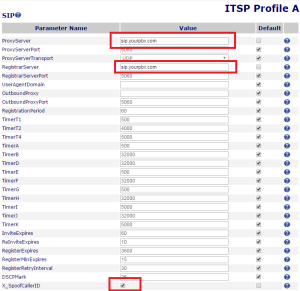
Configure the SIP Provider service in Voice Services -> SP1 Service. You will provide your SIP username and password as well as making inbound calls to the OBi110 route to the “Line” (PSTN) port:

Now you should disable the junk, if you don’t need it. Go into each of the following and untick the “Enable” box:
Voice Services -> SP2 Service
Voice Services -> OBiTALK Service
Voice Services -> Auto Attendant
You now need to configure the LINE port to call a given number over the SP1 SIP trunk when it receives an inbound call. I have picked 22222 as that number – you can choose anything that the PBX accepts. Do this under Physical Interfaces -> LINE Port.
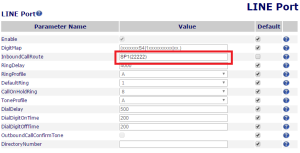
If, like me, you want to configure the phone attached to the PHONE port to dial over SIP rather than the PSTN, you’ll need to change PrimaryLine under Physical Interfaces -> PHONE Port:

You can now reboot the OBi100 by clicking the Reboot button in the top right.
The OBi110 will now register (i.e. send a SIP “REGISTER”) to the host configured in Service Providers -> ITSP Profile A -> SIP. If you see it register, you’re good to go. Calls into the OBi110 from the PSTN will route to the number that you configured in Physical Interfaces -> LINE Port. Calls that you send over SIP to the OBi110 will be routed out onto the PSTN.
If you are in the UK, you should read my other post about configuring the PHONE/LINE (FXS/FXO) settings to work in the UK.
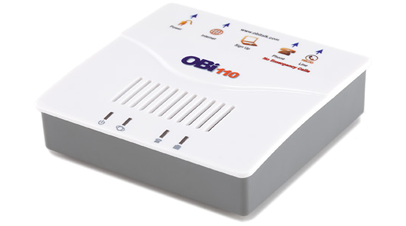
Hi, can we receive calls dialed to a pstn line in any sip address(like xxxxxxxx@callcentric.com)using Obihai OBi110 without use of freepbx?. Can you please guide ?
This is a great guide! The best one I’ve found, in fact. One question: If I want incoming calls routed to the “Phone” port directly, what is the correct setting? Reply by email if you can.
Hi Phil
Is this post yours?
https://wiki.freepbx.org/pages/viewpage.action?pageId=4161594
If so can I ask a couple of questions?
Thanks in advance
James
That’s not my post but feel free to ask some questions
Hi Phil, I currently use an Invoxia voice bridge to receive landline calls on my mobile wherever I am, if I got an obi110 and followed your 2 guides would I be able to use voip software on android and do the same thing as the Invoxia? I don’t mind if it’s more difficult to setup I would just like something that doesn’t rely on the manufacturers server and will be more reliable as I find the Invoxia android app is not very good. Thank you for any help you can give
Hi Liam,
Registering VoIP phones directly is certainly possible with the OBI110 however it’ll be a challenge to get working if your network uses NAT (which I suspect it does). SIP was designed before NAT so, on the whole, one side (usually the server (i.e. the OBI, in this case)) needs to not be running behind NAT. You can achieve this by running the OBI on its own public IP, if your ISP will give you one. The other problem that you will have is that the majority of mobile apps provided by VoIP telcos use Apple/Android native push notification functionality to avoid the app having to run in the background of the phone. In your case, you won’t get this support so the app will need to always be running which will tank your battery pretty quickly.
For me, the easiest thing to do would be to hook the OBI up to a SIP trunk provided by one of the many VoIP telcos out there. You can then cause the OBI to forward PSTN calls over the SIP trunk to your mobile. You’ll pay for each call to your mobile, but it won’t be a huge amount of money unless you’re doing a lot of calls.
Phil
Hi,
I’d like to be able to make and receive call from/to my land line from my android phone when I’m at home.
Basically use my smartphone to pick up (and make) calls to my landline when I’m at home.
Is that possible with just an Obi 110 (or 200) and my phone running some SIP software (maybe built in)?
Or will I need a PI or similar?
Thanks
B
Hi Phil,
This sentence “You now need to configure the LINE port to call a given number over the SP1 SIP trunk when it receives an inbound call. I have picked 22222 as that number – you can choose anything that the PBX accepts. ”
I’m guessing that with a freePBX or other system the transferred call from OBi110 needs an extension number; is that what you are referring to?
I’m using, voip.ms, where the Line port call doesn’t require a number, it just goes into the sub-account specified in SP1 SIP Credentials. Thus, what to put into this entry box for “InboundCallRoute”? Should this entry just be “SP1”?
Thank you!
This page is very helpful.
Good question. I’ve never used voip.ms but every SIP INVITE will have a user part to the RURI which is usually the number you’re calling. If voip.ms doesn’t care about the number then I guess you can just put any number in the box.